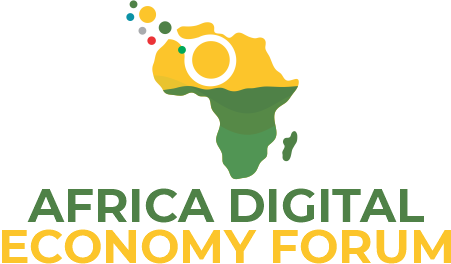With nearly half (48%) of Fortune 500 companies reporting the use of freelance platforms, as flexibility quickly becomes a top priority for today’s workforce, the global online freelance workforce is far larger than estimated, making up to 12% of the global workforce.
RELATED: How embedded payment is driving Africa’s growing Gig economy
But which countries are truly at the forefront of the booming online freelancing economy?
Intrigued, experts at online job search platform JobLeads analysed data from the Online Labour Observatory and the World Bank Group to reveal the countries dominating online gig work. The analysis also sheds light on the most in-demand industries and the educational backgrounds of today’s thriving online freelancers.
Key findings
- US leads the charge in online freelancing, holding 28% of the global online freelance market.
-
Software development and tech roles (36.41%) dominate the US freelance market, followed by creative and multimedia positions (21.06%), and clerical/data entry jobs (18.22%).
- South Africa ranks lower on the list but has seen a 9% increase in its global market share over the past five years.
-
Over half (52%) of online gig workers who rely on this as their primary income have a high school education, while one in five (20%) hold a bachelor’s degree.
Global freelance hotspots: Top 10 countries dominating the online gig market
|
Rank |
Country |
5 years % change of global share (2019 – 2024) |
Global share of online freelancers |
|
1 |
United States |
-8% |
28.03% |
|
2 |
Spain |
39% |
6.98% |
|
3 |
Mexico |
-7% |
4.63% |
|
4 |
United Kingdom |
-2% |
4.11% |
|
5 |
Colombia |
48% |
3.29% |
|
6 |
Argentina |
59% |
2.98% |
|
7 |
India |
32% |
2.83% |
|
8 |
Australia |
-30% |
2.51% |
|
9 |
Canada |
-26% |
2.29% |
|
10 |
Germany |
-21% |
1.21% |
For the complete data, please click here.
South Africa has witnessed a notable 9% increase in its share of the global online gig economy over the past five years. However, despite this growth, the country lingers in the lower ranks claiming just 0.17% of the world’s online freelance market. While the freelance sector in South Africa is expanding, its relatively small market size keeps it far from competing with the top freelancing destinations.
United States leads in online freelancing worldwide
Almost a third (28.03%) of online freelancers currently reside in the United States. Despite a slight 8% dip over the past five years, America remains the go-to hub for remote freelancing work. Leading the charge is Gen Z, with over half (52%) freelancing as they increasingly reject conventional 9-to-5 jobs in favor of freedom.
Software development and tech dominate the freelance landscape in the US, making up a notable 36.41% of online gig workers within the country. Creative and multimedia roles come next at 21.06%, followed by clerical and data entry at 18.22% and sales and marketing at 12.37%.
Spain takes second spot
Following in second is Spain, boasting a remarkable 39% growth in its global freelance share over the past five years. Now holding 6.98% of the online freelance market worldwide, Spain’s appetite for online gig work is on the rise. In fact, six out of ten highly educated freelancers in Europe now have no intention of returning to traditional salaried jobs.
Mexico ranks as the third biggest destination for online gig workers, accounting for 4.63% of the global freelance market. Its proximity to the United States makes it an ideal choice for bilingual professionals. With the cost of living 65% lower than in the US, freelancers can stretch their income further and enjoy a higher quality of life.
UK accounts for 4.11% of global online gig market
Despite a 2% dip in global share over the past five years, the United Kingdom holds a respectable 4.11% of the worldwide online gig market. Freelancers in the UK earn a median income of £42,857 per year – that is £16,357 more than the average employee.
Rounding off the top five online gig hotspots, Colombia’s freelance community has exploded by 48% in the past five years, now capturing 3.29% of the global share.
|
Educational backgrounds of online gig workers and intensity of online gig work |
|||
|
Main |
Secondary |
Marginal |
|
|
Postgraduate Degree |
9% |
3% |
4% |
|
Bachelor’s Degree |
20% |
13% |
19% |
|
Vocational Training |
10% |
15% |
5% |
|
High School |
52% |
57% |
64% |
|
Below high school |
9% |
11% |
9% |
For online freelancers who rely on gig work as their primary income source, over half (52%) are high school educated, while one in five (20%) hold a bachelor’s degree. Postgraduate degree holders are less common, making up just 9% of main gig workers and 3% of secondary gig workers.
Gig economy booming worldwide
High school graduates dominate the online gig economy, accounting for a significant 64% of marginal gig workers, and 57% of secondary gig workers. Vocational training also plays a key role, with 15% of secondary gig workers bringing practical skills to the table.
Martin Schmidt, Co-Founder and Managing Director at JobLeads commented:
“The gig economy is booming worldwide, with the number of gig workers expected to rise by over 30 million in the next year alone. This rapid growth reflects a fundamental shift in how people approach work – flexibility and autonomy are no longer just perks but non-negotiables for today’s workforce.
“Especially among younger generations like Gen Z, professionals are increasingly drawn to the freedom that gig work offers. From choosing their own projects to working remotely, this empowers individuals to take control of their careers. At the same time, businesses benefit from a global pool of skilled talent that freelancers bring to the table.
“As the sector continues to evolve, both workers and employers need to adapt to a new reality where traditional employment models may no longer meet the needs and expectations of the modern workforce.”

































